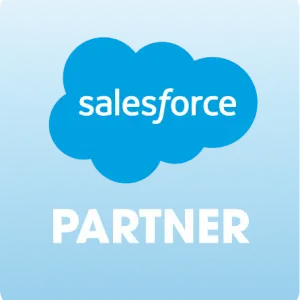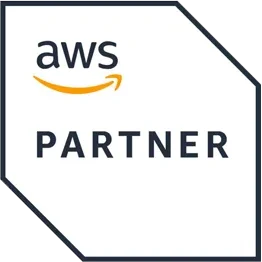A SaaS company had a go-to-market problem they needed to solve fast. They were releasing a new product with multiple features and possible configurations--meaning they were about to introduce dozens of new SKUs on top of hundreds the company already handled. Manually managing the influx of SKUs was tedious and time-consuming.
Even worse, when it came to provisioning products, it was increasingly difficult to keep track of all the different SKUs and their associated features and licensing terms. This confusion led to delays in provisioning, ultimately delaying time-to-value (TTV).
With the new product release just around the corner, the company needed a new approach to software provisioning that would ensure a seamless customer experience and reduce manual effort.
We’ll explore why software provisioning is increasingly challenging, highlight some ways SaaS leaders are addressing software provisioning challenges, and even share some drawbacks to each solution. But first, let’s define software provisioning and explain how it’s linked with SKU management.
What is software provisioning?
Software provisioning is the process of preparing and configuring software instances for customers.
The software provisioning process involves defining the necessary components, features, and dependencies, plus determining the license agreements that apply to those requirements.
The Challenge of Traditional SKU Management and SaaS Provisioning
Many companies provide software according to SKUs. In the ideal situation, the provisioning system (or person) uses the SKU to look up the software product in a database, retrieves the appropriate installer files, and initiates the installation process.
But the legacy approach to SKUs does not take into account the complexity and speed required for software provisioning at scale.
The team must create a SKU for every possible configuration of features. Engineers get involved, and so does the product team, who must document each configuration and how it fits within the system. The operations team needs to have visibility of every customer purchase. The finance team has to know when the sales team delivers the correct SKU since it only recognizes revenue upon delivery. If a customer is upgraded to a different package by customer success, that also needs to be reflected.
Manual work increases the cost per order. It can also lead to incorrect or inconsistent delivery of products and features to customers and the inability to offer the self-service experience that your consumers expect. What’s more incorrect software provisioning leads to customer overuse, which also impacts revenue.
What Makes This Challenge So Common?
According to a Productiv survey, 48% of respondents cite managing and provisioning SaaS SKUs as a major pain point. Here’s why this problem is so common:
Growth through product innovation.
As your company grows, it can become difficult to manage and scale lots of product offerings, leading to the creation of more SKUs to keep track of inventory and manage customer accounts.
Growth through market segment expansion.
The introduction of new product offerings or variations to meet the needs and requirements of different customer segments leads to a proliferation of SKUs.
Product variations over time.
SaaS companies often offer multiple editions or versions of their product, each with different features and capabilities, leading to an increase in the number of SKUs.
SaaS Software provisioning is particularly challenging because products are often more complex. As the number of SKUs increases, so does the complexity of managing them. As you grow and add products and features, provisioning problems snowball.
Without an automated software provisioning system that can manage product complexity, you’ll end up with slower execution, higher costs, and more human errors.
Why High-Growth SaaS Companies Need Automated Software Provisioning
High-growth companies realize that manual processes are taking a chunk out of profitability. Automated provisioning tools are growing in popularity. We’ve seen a significant uptick in organizations looking to automate software provisioning. At the end of the day, these are the companies that are shifting their mindset away from growth at all costs, and towards long-term profitable revenue growth.
Exploring the Options for Automating Software Provisioning
Approach 1: Build a dedicated system in house.
This is the approach taken by a huge SaaS company with the financial and personnel resources to build its own dedicated software provisioning system.
An audit revealed that the company was leaving $100-200 million worth of revenue on the table because customers were using more of the SaaS features than they’d originally bought. As the new features rolled out, the system provisioned them to users but didn’t charge more – there was no upgrade process in place. The company is publicly held, and failing to capture that revenue created a serious liability. It was imperative for them to set a course correction. For them, the best way to do that was by building a new software provisioning system that managed SKUs.
The company made automating software provisioning its top priority, carved out an internal team with dedicated funding and resources, and hired external consultants.
In this way, the company had complete control of the process. It built exactly what its customers needed, integrated it with its current system, and minimized the impact on internal users.
But this level of investment is not ideal in most organizations. It requires a lot of dedicated resources -- product managers, engineers, IT, and developers -- and diminishes your ability to focus on core competencies.
Approach 2: Rely on existing third-party SKU solution that integrates with your current system.
Companies commonly need the provisioning solution to integrate with their security, billing, CRM, and ecommerce site, working hand in hand with IT. This usually means using an existing CRM plus internal IT development. It’s the option taken by a company that hit $100 million in revenue within the last few years.
This company tried to handle SKU management in a CRM system that wasn’t designed for it. They decided to customize an existing provisioning software solution and integrate it with its CRM, which was also playing double duty as a SKU management system.
This approach is not as intensive as building from scratch and still gives you control over the software provisioning system.
However, it still takes a lot of development effort to integrate it into the CRM. As with the self-built system, you must maintain the technology, which requires continued resources. As your product suite grows, this system is unlikely to scale effectively.
Approach 3: Buy a dedicated solution that includes automated software provisioning from a third-party provider.
This is the choice of a large company that wanted to go to market with a SaaS solution in new regions. The company had several issues it needed to address:
- It wanted a provisioning solution that could map several systems and workflows together.
- They sell primarily through distributors, so they needed a system that supported selling and tracking through distributive channels.
- Company leaders wanted to enable distributors and partners to buy the software anywhere, on any device.
- The company needed a single source of truth for customer usage information.
- They needed a better way to manage an influx of new SKUs associated with the new regional selling.
With this option, you can pick a partner with expertise to get it right the first time. You rely on a proven platform that will broaden your go-to-market capabilities. A third- party provider can also help ease the implementation. You walk away with a customized, best-in-class, cloud-based solution, with someone else handling maintenance and driving innovation.
True, there are always challenges when merging new technologies with existing IT environments. You still need some developers because the application must recognize triggers/notifications and take instructions based on the order -- though this requires minimal effort. Ultimately, this approach is the easiest of the three options and requires significantly fewer resources.
The Sentinel licensing and entitlement platform gives you the freedom to provision new products and features efficiently
As your SaaS company seeks to solve operational challenges associated with growth, software provisioning controlled and automated by an entitlement management system might be right for you.
Entitlement management allows you to fully automate the trial/order-to-provision process, reduce errors, and quickly scale. No more manual checking and double-checking SKUs.
At the same time, Entitlement management solutions integrate software provisioning with existing workflow engines, so there’s only one source for tracking software lifecycle events.
If you want the freedom to roll out new products and efficiencies that lower costs, reduce revenue leaks, and ease operations, the Sentinel platform might be the solution you need.



